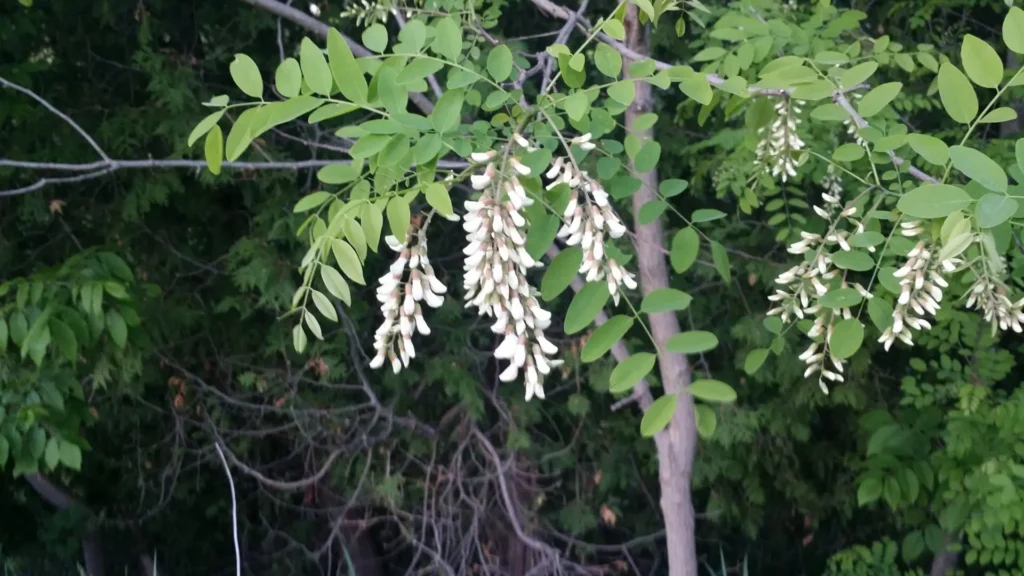
Black locust, a natural deciduous tree that grows quickly, can reach heights of 70 to 80 feet but is more frequently seen between 30 and 50 feet tall with a spread of 20 to 35 feet. An abundant lawn is made possible by the upright growth and short, crooked branches that create an open canopy and provide light shade below the tree. Young saplings have smooth, green bark, whereas the bark of adult trees is heavily wrinkled, dark brown, and has flat-topped ridges.
Care Guide
Let’s examine the ideal conditions you should establish for your black locust’s healthy, long-term growth.

Sunlight Requirements
Due to their propensity to settle new territory before other plant life, black locusts are regarded as pioneer species. This indicates that there hasn’t been much to no rivalry for sunlight over time. The species has become an extremely shade-intolerant hardwood as a result. Although it may live in partial sun, it loves full sun. It can survive with between 4 and 6 hours of unfiltered sunshine every day, but prefers 6 hours or more of direct sunlight daily.
Soil Conditions
Black locusts are tough, sturdy trees that may thrive in a range of soil types. The roots that fix nitrogen require deep, dry soil that is just moderately damp. It has been demonstrated that it grows even more healthily in calcareous or limestone-containing soils.
The vast range of pH values it can grow in demonstrates its capacity to thrive in depleted soils. The pH range that black locusts prefer is between 4.6 and 8.2. So long as your soil is not soggy and has adequate drainage, your tree should be able to develop.
Water Requirements
You must water your black locust periodically after planting it to help the roots take root and extend outward. Throughout the first growing season of your tree, make sure the soil is wet but not soggy. Your water must drain effectively and must not collect in the root zone. This can suffocate the roots. Drought tolerance in mature trees is average. They will benefit from additional watering during prolonged dry spells, but under regular weather circumstances, plants often get enough water from the environment.
To assist the soil keep its moisture, add 2 to 3 inches of organic mulch around the base of the tree. The roots will remain content as a result of the water not evaporating too soon.
Fertilization
Most likely, you won’t ever need to fertilize your black locust with a nitrogen-rich product. It has a built-in fertilizer factory because it can fix nitrogen on its own.
To figure out what’s going on, you should test the soil if you detected anything strange. To balance out the nitrogen’s impact on the pH, you might need to add urea or another ammonia-based substance. Frequent nitrogen fixation may cause the pH of the soil to rise.
Pruning
As soon as you see any dead, sick, or damaged branches, prune them back. To stop disease, trim them back until you reach living tissue and bandage the exposed wood. Inspect the branches in the fall to see whether any branches are touching one another. If so, cut off the weaker branch since contact with it might injure the tree and leave it susceptible to disease.
Table





